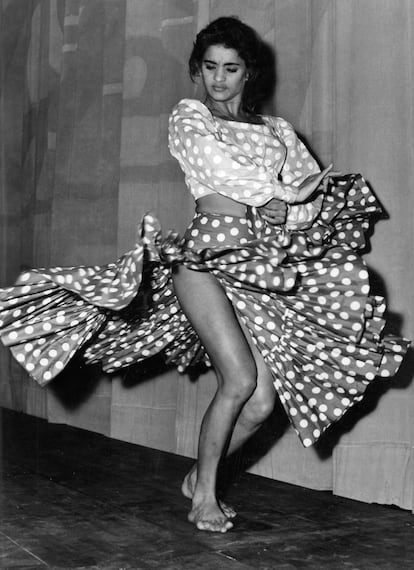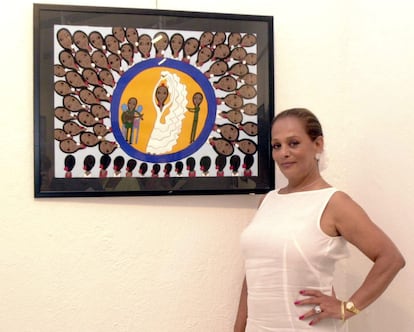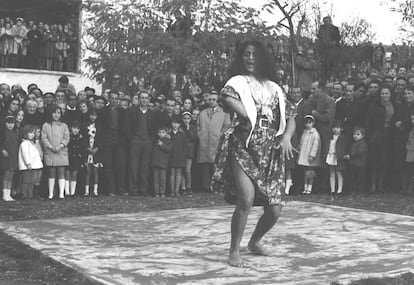Although her name was Micaela Flores Amaya and she was a Catalan gypsy, born to immigrant parents in Marseille (1938), I doubt that many of us knew her name and, especially, her surnames, which linked her to important families in the dance of her time. Over the years, knowing that she was Carmen Amaya’s cousin could explain the tremendous impetus of her dance, but for ordinary mortals it was enough to recognize that this dance full of seduction was that of The Chunga, died at 87 years old: His name and bare feet did not require further information.
In times when an always small list of intellectuals began to look at flamenco manifestations with an unprejudiced cultural interest and, at times, with anthropological overtones, it is not strange that a dancer of such ethnic strength became a kind of muse for some of them in Barcelona in the fifties and that transcended borders within those environments. Introduced to them by the painter Paco Rebés, who discovered her dancing in the streets and became her mentor and protector, she was admired by Picasso and Dali and she was the muse of poets such as Alberti, León Felipe, Blas de Otero or José Manuel Caballero Bonald. of recognized flamenco affiliation, who would go on to present her in various shows.
But, beyond those environments, the artist had to continue on her path. At the end of the fifties she was hired by Pastora Imperio for her tablao in Palamós, before landing in the Capital, where the Corral de la Morería would become a talismanic place for her, where, over the years, she would come to exhibit her paintings, because surrounded by so many painters, she discovered her artistic side and created her own work that has been described as naive or naive.

UNKNOWN (EFE)
On his way in and out of the capital, as part of a huge international activity, he came into contact with the actress Ava Gadner, then living in Madrid. Through her influence he managed to film in Hollywood, in addition to making his debut in Las Vegas with businessman Sullivan. But she also did it in Spain, with directors such as José María Forqué or José Luis Gonzalvo, who was her husband and father of her three children.
His popularity in Spain would settle and grow at the end of the sixties, and already in the seventies, with collaborations with Lola Flores, return to the Madrid tablaos and some presences on television, where many laymen became faithful to his dance of strength and beauty with her unmistakable bare feet. Retirement from the stage made headlines not a few years ago due to the illness that took her. Taking refuge in painting, in the face of her illness she showed the same strength that we remember from her dance.


